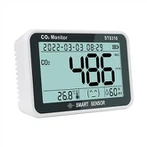How to use a multimeter to test IGBT modules
1, Determine polarity
Firstly, set the multimeter to the R × 1K position. When measuring with the multimeter, if the resistance between one pole and the other two poles is infinite and the resistance between that pole and the other two poles is still infinite after swapping the probes, then it is determined that this pole is the gate (G). Measure the remaining two poles with a multimeter. If the measured resistance is infinite, replace the probe and measure a smaller resistance. In the measurement of a small resistance value, it is determined that the red probe is connected to the collector (C); The black probe is connected to the emitter (E).
2, Judging good from bad
Set the multimeter to the R × 10K position, connect the black probe to the collector (C) of the IGBT and the red probe to the emitter (E) of the IGBT. At this point, the pointer of the multimeter is at zero. Touch both the gate (G) and collector (C) with your fingers at the same time, and the IGBT will be triggered to conduct. The pointer of the multimeter will swing towards the direction of lower resistance and can stop indicating a certain position. Then touch the gate (G) and emitter (E) simultaneously with your fingers, and the IGBT is blocked, causing the multimeter pointer to return to zero. At this point, it can be determined that the IGBT is good.
3, Any pointer multimeter can be used to detect IGBT
When judging the quality of IGBT, be sure to set the multimeter to the R × 10K position, because the internal battery voltage of each multimeter below the R × 1K position is too low, and the IGBT cannot be turned on during the inspection, making it impossible to determine the quality of IGBT. This method can also be used to detect the quality of power field-effect transistors (P-MOSFETs).
Inverter IGBT module detection:
Set the digital multimeter to the diode test mode and test the forward and reverse diode characteristics between IGBT modules c1 e1, c2 e2, as well as between gate G and e1, e2, to determine if the IGBT module is intact.
Taking the six phase module as an example. Remove the wires of phases U, V, and W on the load side, use a diode test mode, connect the red probe to P (collector c1), and measure U, V, and W sequentially with the black probe. The multimeter displays the maximum value; Reverse the probe, connect the black probe to P, and use the red probe to measure U, V, and W. The multimeter displays a value of around 400. Connect the red probe to N (emitter e2) and the black probe to measure U, V, and W. The multimeter displays a value of around 400; Connect the black probe to P, measure U, V, and W with the red probe, and the multimeter displays the maximum value. The forward and reverse characteristics between each phase should be the same. If there is a difference, it indicates that the performance of the IGBT module has deteriorated and should be replaced. When the IGBT module is damaged, only breakdown and short circuit situations occur.
The red and black probes are used to measure the forward and reverse characteristics between the gate G and emitter E. If the multimeter measures the maximum value twice, it can be determined that the IGBT module gate is normal. If there is a numerical display, the gate performance will deteriorate and this module should be replaced. When the forward and reverse test results are zero, it indicates that the detected one phase gate has been broken down and short circuited. When the gate is damaged, the voltage regulator that protects the gate on the circuit board will also break down and be damaged.






